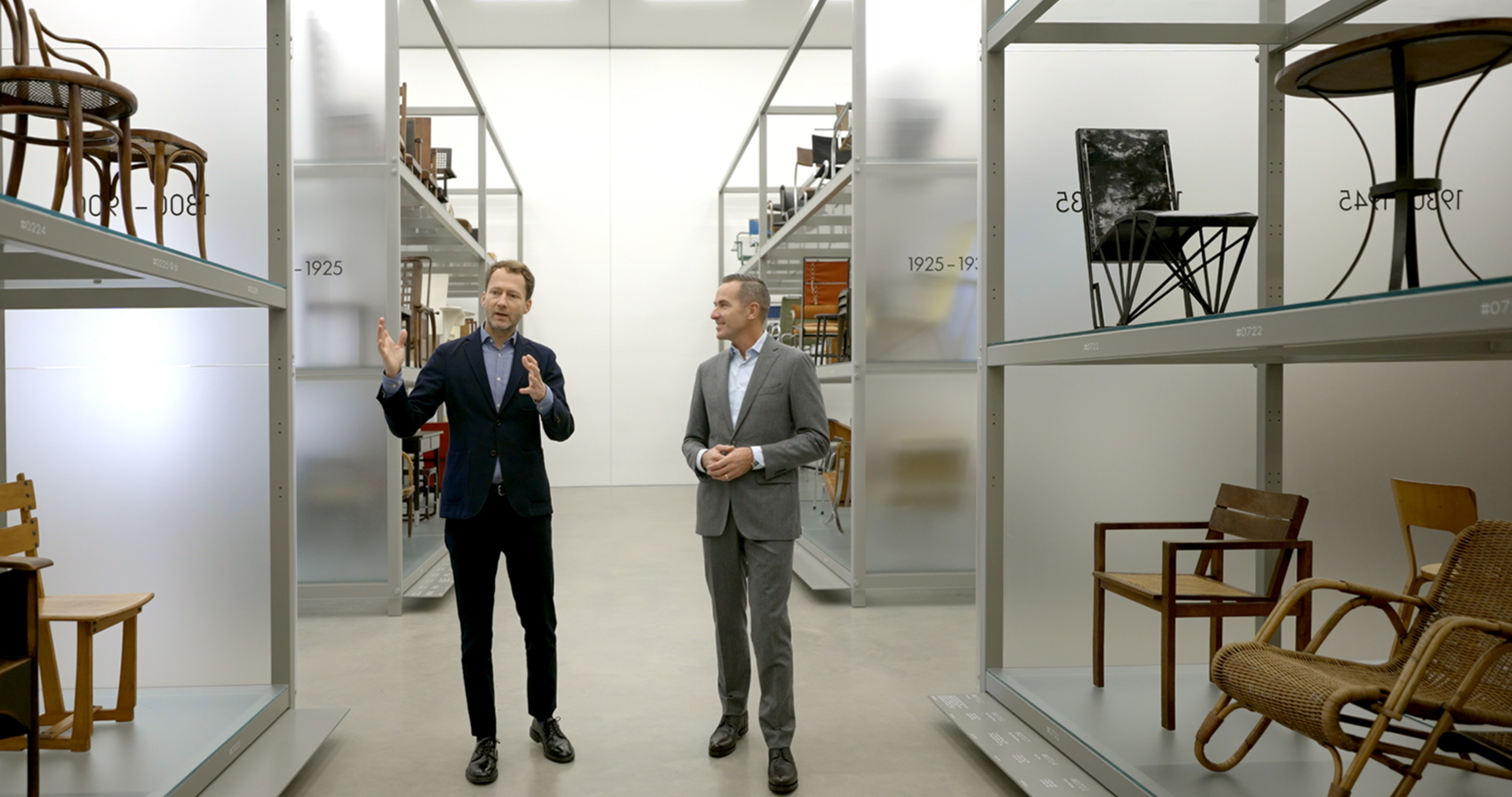Five theses on design
The future is an attitude. Dr. Mateo Kries, Director of the Vitra Design Museum, talks about social responsibility in design.

Dr. Mateo Kries at the Vitra Campus’ Fire Station, which was designed by Zaha Hadid and completed in 1993. This was the Iraqi-born, London-based architect’s first building complex to be realized.
Dr. Mateo Kries at the Vitra Campus’ Fire Station, which was designed by Zaha Hadid and completed in 1993. This was the Iraqi-born, London-based architect’s first building complex to be realized.
“Design, and museums dedicated to it, can be used to throw light on social debates and address digital challenges,” says art historian, curator and author, Dr. Mateo Kries. The director of the famous Vitra Design Museum in Weil am Rhein, Germany, has worked at the institution since 1996. As one of the leading establishments of its kind, the Vitra is committed to research and showcasing design, past and present, as well as examining its links to architecture, art and pop culture. As early as 2010, Kries addressed the social relevance of design in one of his books, Total Design. “It’s about sensitizing people to environmental design and teaching them to appreciate it. Design objects always send a message.”

The Vitra Design Museum boasts a collection of global standing, including the Eames chairs shown here in the museum’s collection depot.

A 2013 prototype of Dutch designer Joris Laarman’s Aluminum Gradient Chair, which was produced using 3D printing.
The Vitra Design Museum boasts a collection of global standing, including the Eames chairs shown here in the museum’s collection depot.
A 2013 prototype of Dutch designer Joris Laarman’s Aluminum Gradient Chair, which was produced using 3D printing.
1. Design does it responsibly.
"We face tremendous global challenges. Design is not a luxury. Instead, it is an indispensable tool for tackling those challenges. By that logic, the focus cannot be on aesthetics, but rather on design as an attitude.”

Dr. Mateo Kries in the main building of the Vitra Design Museum, which was the first project in Europe by American architect Frank Gehry.

American designer Johanna Grawunder’s 2009 XXX coffee table combines clear and coloured glass.
Dr. Mateo Kries in the main building of the Vitra Design Museum, which was the first project in Europe by American architect Frank Gehry.
American designer Johanna Grawunder’s 2009 XXX coffee table combines clear and coloured glass.
2. Design embraces diversity.
“Individual cultures, groups and entire global regions also want recognition for their take on design. As design embraces this new-found diversity, the industrialised West can no longer remain the dominant force. To ensure acceptance and diversity, designers increasingly need to do justice to the cultural environment. By facilitating customisation, adaptation and variability, new technologies support inclusivity in design.”
3. Design enters the circular economy.
“To make life on earth more sustainable, we need to adopt a cyclical approach, focusing on recycling things and materials as well as conserving raw materials. That means designers are tasked not just with creating products but also factoring life cycles into their work – from the choice of raw materials to the item’s disposal. Only then will we succeed in achieving greater sustainability.”

The Vitra Schaudepot displays key items from the museum’s collection of some 20,000 pieces.

Created by Japanese interior architect and designer Shiro Kuramata in 1986, How High the Moon is an armchair made from expanded steel mesh.
The Vitra Schaudepot displays key items from the museum’s collection of some 20,000 pieces.
Created by Japanese interior architect and designer Shiro Kuramata in 1986, How High the Moon is an armchair made from expanded steel mesh.
4. Design raises eyebrows.
“In a world full of interchangeable, by-the-numbers shapes, sharp, edgy design really stands out. While an excess of lines and shapes creates confusion, formal restraint creates clarity. Given the myriad images and information in today’s world, visual minimalism is refreshing. People don’t want to get sucked into the Metaverse, they crave what is real, tangible and genuine along with circumspection. While digitalisation continues to drive social and design trends, the touchstone for designers remains the real world with its corners, edges, surfaces – and emotions.”

View from the Fire Station to Álvaro Siza’s factory building on the Vitra Campus. The native of Portugal ranks among the most important European architects of our time.

Henrik Wenders (left), Head of Brand at Audi AG, in conversation with Dr. Mateo Kries at the Vitra Schaudepot.
View from the Fire Station to Álvaro Siza’s factory building on the Vitra Campus. The native of Portugal ranks among the most important European architects of our time.
Henrik Wenders (left), Head of Brand at Audi AG, in conversation with Dr. Mateo Kries at the Vitra Schaudepot.
5. Less design is more.
“Sometimes – in fact, most of the time – less design is better. The aim isn’t to try and create new needs, but rather to unlock new freedoms. Designers will come to know when it’s better to abstain from designing something and launching products. Dieter Rams’ book title says it all – As Little Design As Possible."
Conversations on Progress: Henrik Wenders meets Dr. Mateo Kries





